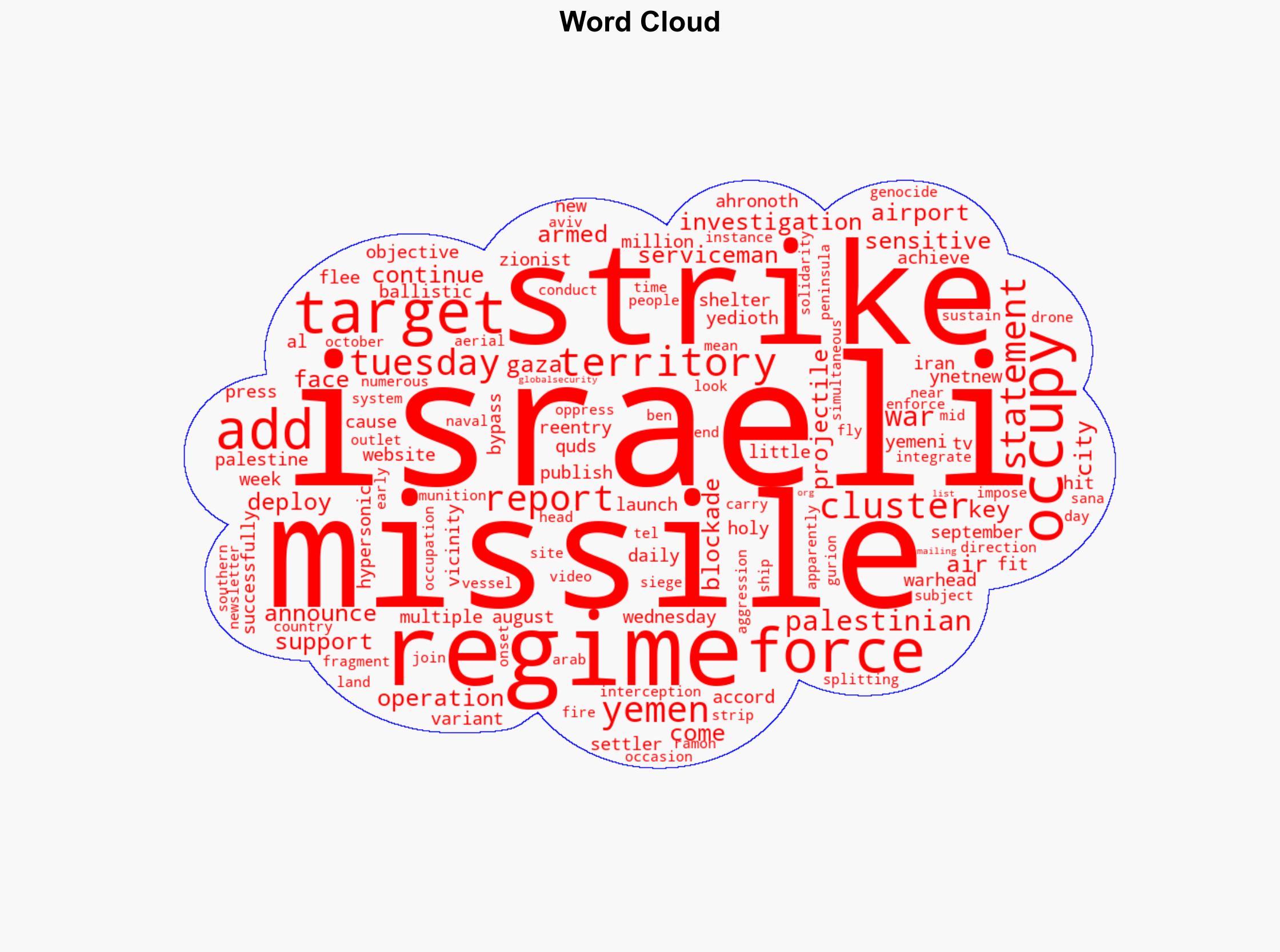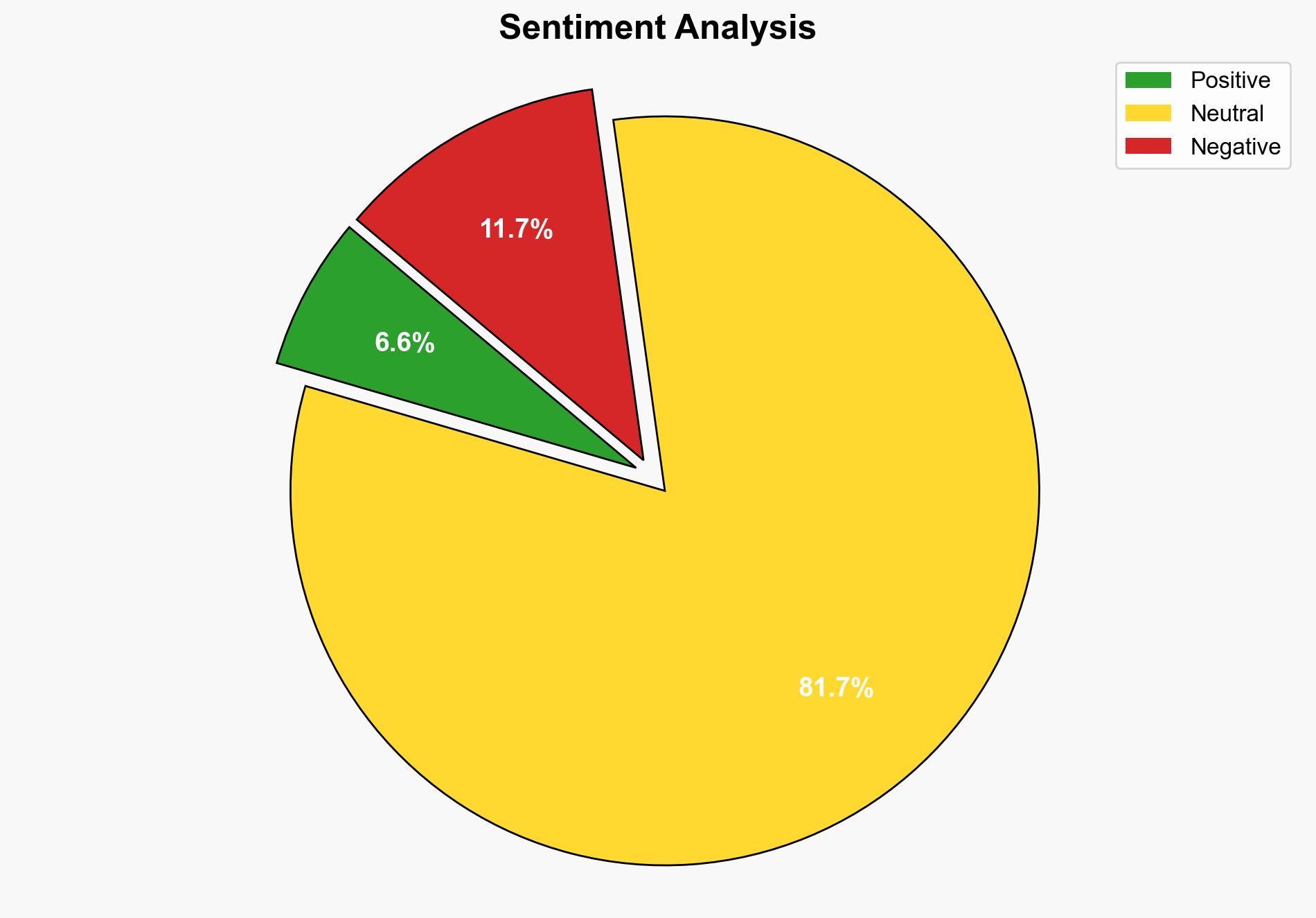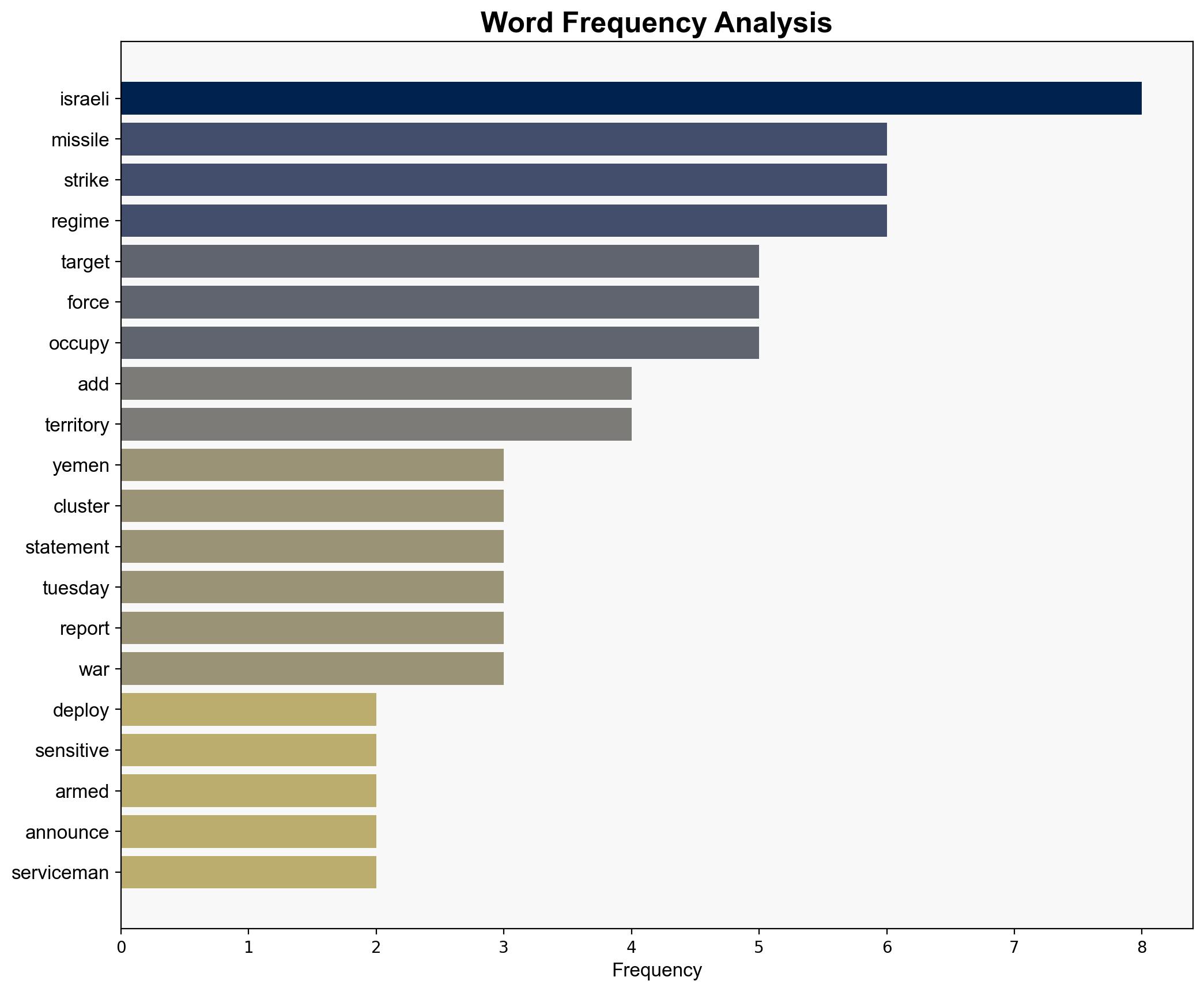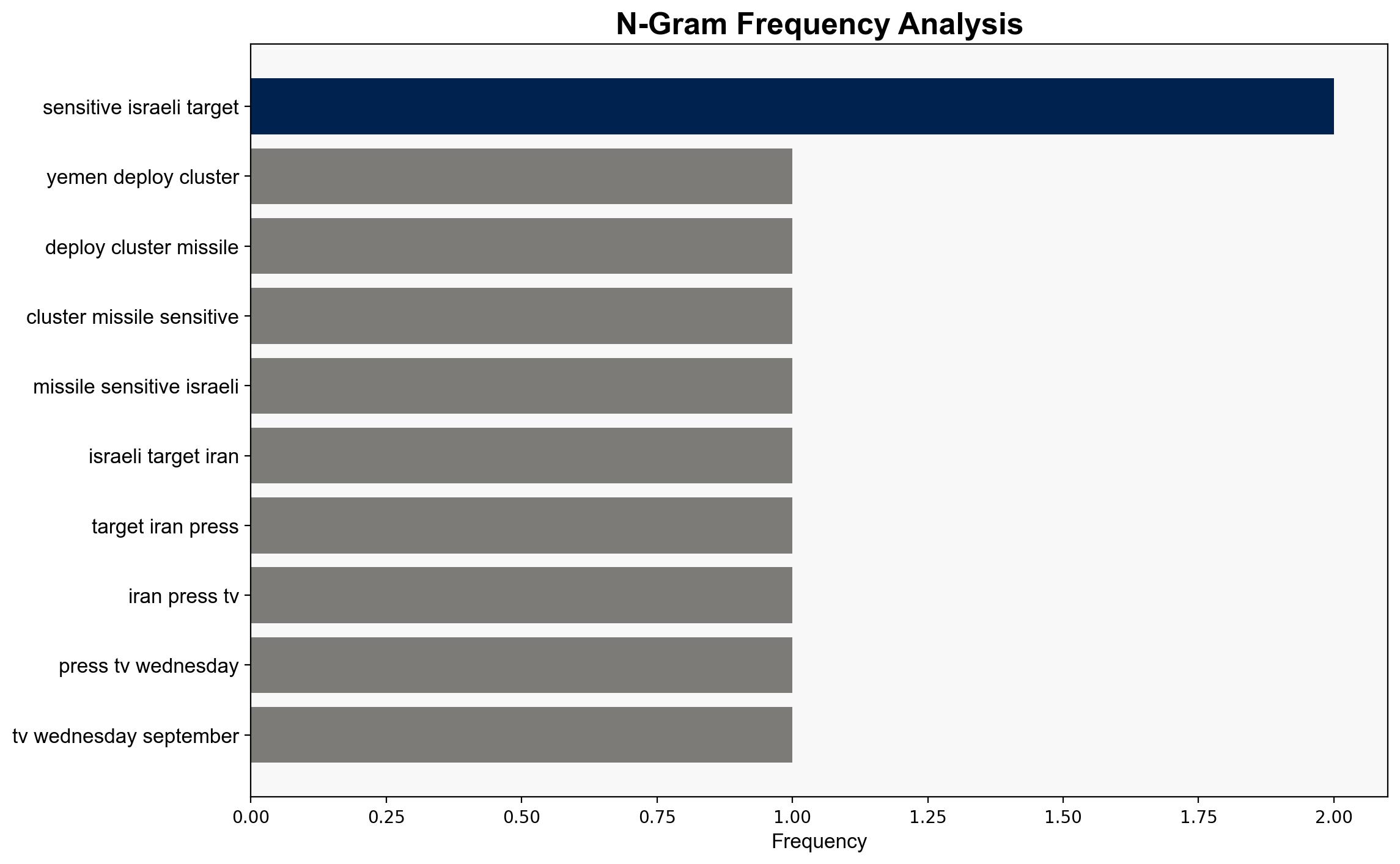Yemen deploys ‘cluster missile’ against several sensitive Israeli targets – Globalsecurity.org
Published on: 2025-09-10
Intelligence Report: Yemen deploys ‘cluster missile’ against several sensitive Israeli targets – Globalsecurity.org
1. BLUF (Bottom Line Up Front)
The most supported hypothesis is that Yemen’s missile strike is a strategic demonstration of solidarity with Palestinians and a signal of increased military capability, likely backed by Iran. Confidence level is moderate due to potential biases in source reporting and lack of independent verification. Recommended action includes increased intelligence sharing with regional allies and enhanced missile defense readiness.
2. Competing Hypotheses
1. **Hypothesis A**: Yemen, with potential Iranian backing, launched the missile to demonstrate military capability and express solidarity with Palestinians, aiming to deter Israeli actions in Gaza.
2. **Hypothesis B**: The missile strike is a misattributed event, possibly a false flag operation by another actor to escalate tensions between Yemen and Israel, or to draw Israel into a broader conflict.
Using ACH 2.0, Hypothesis A is better supported by the direct statements from Yemeni armed forces and the alignment with ongoing regional dynamics, such as Iranian support for Yemen and Palestinian causes. Hypothesis B lacks direct evidence and relies on speculative motives.
3. Key Assumptions and Red Flags
– **Assumptions**: Hypothesis A assumes Yemeni capability to deploy advanced missiles and Iranian willingness to support such actions. Hypothesis B assumes the presence of a third-party actor with the capability and motive to conduct a false flag operation.
– **Red Flags**: The source is potentially biased, given its alignment with Iranian perspectives. Lack of independent verification of the missile strike and its effects raises questions about the accuracy of the report.
4. Implications and Strategic Risks
– **Escalation**: The incident could lead to increased military engagements between Israel and Yemen, with potential Iranian involvement.
– **Regional Stability**: Heightened tensions may destabilize the broader Middle East, affecting global oil markets and international shipping routes.
– **Cyber and Psychological Warfare**: Potential for increased cyberattacks and propaganda efforts to sway public opinion and international responses.
5. Recommendations and Outlook
- Enhance missile defense systems and readiness in Israel and allied territories.
- Increase intelligence cooperation with regional partners to monitor missile developments and Iranian activities.
- Engage in diplomatic efforts to de-escalate tensions, potentially involving neutral third-party mediation.
- Scenario Projections:
- Best Case: Diplomatic resolution reduces tensions, leading to a ceasefire.
- Worst Case: Escalation into a broader regional conflict involving multiple state and non-state actors.
- Most Likely: Continued low-intensity skirmishes with intermittent diplomatic engagements.
6. Key Individuals and Entities
– Yemen Armed Forces
– Iranian government (implied support)
– Israeli government and military
7. Thematic Tags
national security threats, regional conflict, missile defense, Middle East tensions





